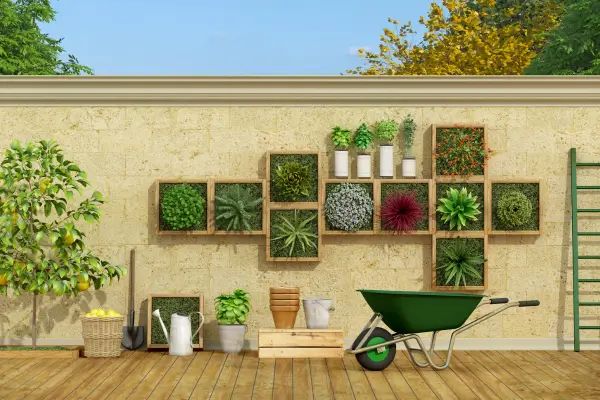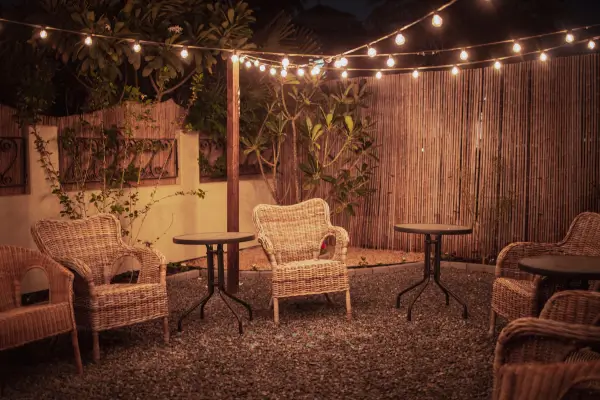How to build a sustainable drip irrigation system is a practical and eco-friendly way to water your garden without wasting resources.
Drip irrigation delivers water slowly and directly to the roots, which helps reduce runoff and evaporation.
It’s perfect for anyone who wants to maintain healthy plants while cutting down on water usage and utility bills.
The best part is that you can build your system using recycled materials you likely already have at home.
In this guide, you’ll learn the benefits of drip irrigation and how to create your own low-cost system step by step.
Why Choose Drip Irrigation?
Drip irrigation offers several advantages over traditional watering methods:
- Water Efficiency: Delivers water directly to plant roots, reducing evaporation and waste.
- Healthier Plants: Prevents overwatering and minimizes the risk of diseases caused by excess moisture.
- Cost Savings: Reduces water bills by optimizing water usage.
- Eco-Friendly: Reuses plastic and other materials, reducing waste and promoting sustainability.
- Reduces Weed Growth: Since water is only delivered where needed, it discourages weed development.
- Adaptable to Different Environments: Works in gardens, potted plants, and even vertical gardens.
Now, let’s gather the necessary materials and start building your irrigation system.
Materials Needed
Most of the required materials can be found at home or repurposed from recyclable items.
| Material | Purpose |
|---|---|
| Plastic bottles (1L or 2L) | Water emitters |
| Old garden hose or PVC pipes | Water distribution system |
| Small drill or needle | Creating water release holes |
| Scissors or cutter | Cutting pipes and bottles |
| Funnel | Filling the system with water |
| Wire or zip ties | Securing the system in place |
| Rubber washers | Preventing leaks (optional) |
| Mesh screen or fabric | Filtering out debris to prevent clogging |
Step-by-Step Guide to Building Your DIY Drip Irrigation System
1. Prepare the Water Emitters
Plastic Bottle Method:
- Take a clean plastic bottle and remove the cap.
- Drill small holes on the sides near the bottom of the bottle (2-4 holes depending on desired water flow).
- Fill the bottle with water and place it upside down in the soil near plant roots.
- Bury part of the bottle in the soil to keep it stable and prevent evaporation.
Hose/PVC Method:
- Cut an old garden hose or PVC pipe to fit your garden layout.
- Use a drill or hot needle to create small holes along the pipe, spaced according to plant positioning.
- Cap off one end of the hose to create a sealed system.
- Attach a mesh filter at the intake point to prevent debris from clogging the system.
2. Setting Up the System
- Plastic Bottle Emitters: Insert bottles directly into the soil next to plants, ensuring the holes face downward.
- Hose/PVC System: Lay the hose along the garden beds, aligning the holes with plant positions.
- Secure the system with wire or zip ties to prevent movement.
- If using a hose, attach it to a water source and control the flow using a faucet valve.
- Test the system by slowly turning on the water and checking for even distribution.
Optimizing and Maintaining Your System
To ensure your irrigation system functions efficiently:
- Monitor Water Flow: Adjust hole sizes for optimal watering rates.
- Clean Emitters Regularly: Remove debris to prevent clogging.
- Use a Timer (Optional): Automate watering to maintain consistency.
- Adjust for Weather: Reduce water flow during rainy periods to avoid overwatering.
- Check for Leaks: Regularly inspect hoses and bottles for cracks or loose connections.
Customizing for Different Garden Needs
- For Small Potted Plants: Use smaller bottles with fewer holes to avoid excess moisture.
- For Large Gardens: Consider connecting multiple hoses or adding additional emitters.
- For Vertical Gardens: Attach drip lines to vertical structures to water plants at different heights.
- For Vegetable Gardens: Ensure consistent hydration by spacing emitters close to plant roots.
Additional Tips for Customization
- Use a Filtration System: A mesh filter or fabric can prevent dirt from clogging small holes.
- Connect to a Rainwater Collection System: Reuse rainwater to further reduce water waste.
- Paint Plastic Bottles Black: Helps regulate water temperature and prevents algae growth.
- Elevate Water Containers: If using gravity-fed systems, elevating water containers improves water pressure.
Creating a DIY drip irrigation system with recycled materials is one of the smartest ways to care for your garden and the environment at the same time. It’s simple, low-cost, and helps you reduce water waste while keeping your plants healthy and well-nourished.
By repurposing everyday items like plastic bottles or old hoses, you give new life to what would otherwise become trash — transforming it into a system that benefits both your garden and the planet.
This project isn’t just about gardening more efficiently; it’s about adopting habits that align with a more sustainable lifestyle. Every drop saved counts, especially when multiplied over time and across multiple plants.
You don’t need a professional setup to make a difference — just creativity, a few materials, and a desire to grow with intention. Plus, once your system is running, it can save you time, effort, and money in the long run.
Start building your own drip irrigation system today and take one small but impactful step toward greener living — your plants (and the planet) will thank you.



